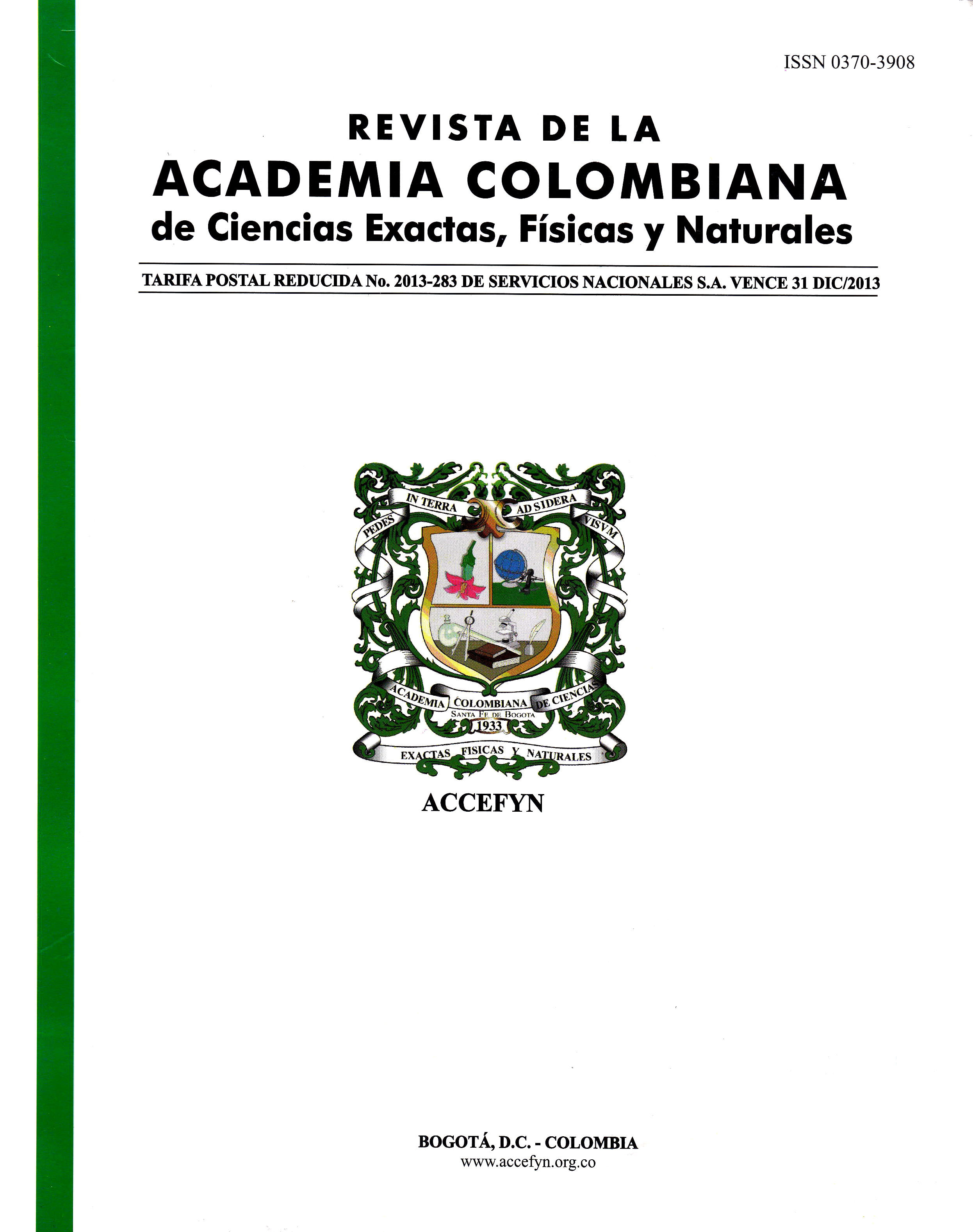Resumen
Se prepararon carbones activados con bagazo de caña de azúcar (BC) y zuro de maíz (ZM) para adsorber cadmio y plomo. BC y ZM fueron carbonizados a 400°C por 1 hora, activados con ácido fosfórico y modificados con ácido nítrico o peróxido de hidrógeno y posterior calentamiento. La activación aumentó el área superficial de los carbones (5 m2/g a 778 m2/g para el ZM y 3 m2/g a 369 m2/g para BC). Los grupos oxigenados se analizaron por IR-DRIFTS. La acidez de los carbones estuvo entre 1.36 y 2.12 meq/g, el pH entre 2.9 y 6.5, y las capacidades de intercambio iónico hasta 0.070 meq/g (absorción atómica).
Referencias
Arpa, C., E., Basyilmaz, S., Bektas, O., Genc, Y., Yurum. 2000. Cation exchange properties of low Turkish coals: removal of Hg, Cd and Pb from wastewater. Fuel Process. Technol 68(2):111-120.
Berkowitz, N. 1957. On the Differential Thermal Analysis of Coal, Fuel 36:355-373.
Boehm, H. P. 1994. Some aspects of the surface chemistry of carbon blacks and other carbons. Carbon 32(5):759-769.
Burns, C. A., P. J., Cass, I., Harding, H., Russell, J., Crawford. 1999. Adsorption of aqueous heavy metals onto carbonaceous substrates. Colloids and surfaces 155(1):63-68.
Castilla, M., M. V., Lopez-Ramon, F., Carrasco-Marin. 2000. Changes in surface chemistry of activated carbons by wet oxidation. Carbon 38(14):1995-2001.
Cui, H., S. Q., Turn. 2009. Adsorption/desorption of dimethylsulfide on activated carbon modified with iron chloride. Appl Catal B Environ 88(1-2):25-31.
Figueiredo, J. L., M. F. R., Pereira, M. M. A., Freitas, y J. J. M., Orfao. 1999. Modification of the surface chemistry of activated carbons. Carbon 37(9):1379-1389.
Gan, T., K., Wu. 2008. Sorption of Pb (II) using hydrogen peroxide functionalized activated carbon, Colloids Surf. A: Physicochem Eng Aspects 330(2-3):91-95.
Garoma, T., S., Shah, B., Badriyha. 2010. Removal of Cadmium, Copper, and Zinc from Aqueous Solution by Activated Carbon Impregnated with 8-Hydroxyquinoline. J Environ Sci Eng 4(5):14-21.
Gregg, S. J., K. S. W., Sing. 1991. Adsorption, surface area and porosity. Academic press Inc. New York.
Haenel, M. W. 1982. Chemistry of Coal Utilization, Second Supplementary Volume. Herausgegeben von M. A. Elliot. Wiley-Interscience, New York, 1981. Angew Chem 94(6):469-470.
Hao, Y. N., X. M., Wang. 2010. Adsorption of Basic Fuchsin onto Xanthoceras Sorbifolia Bunge Crust Activated Carbon Developed by Sodium Hydroxide. Adv Mater Res 156-157:272-278.
He, X-C., J-T., Zheng, W-Z., Yu, G-C., Wang X-F., Qu. 2008. Modification of activated carbon by ozone and its thermodynamics and kinetics of the adsorption for thiophene. Acta Petrolei Sinica (Petrol. Proc. Section). 2008-04.
Hsisheng, T., T-S., Yeh, L-Y., Hsu. 1998. Preparation of Activated Carbon from Bituminous Coal with Phosphoric Acid Activation. Carbon 36(9):1387-1395.
Huidobro, A., A. C., Pastor, F., Rodríguez-Reinoso. 2000. Preparation of Activated Carbon Cloth from Viscous Rayon. Part IV. Chemical Activation. Carbon 39(3):389-398.
Juntgen, H. 1986. Activated Carbon as Catalyst Support. Fuel 65(10):1436-1446.
Kilic, M., E., Apaydin-Varol, A. E., Pütün. 2011. Adsorptive removal of phenol from aqueous solutions on activated carbon prepared from tobacco residues: Equilibrium, kinetics and thermodynamics. J Hazard Mat 189(1-2):397-403.
Kim, D., Y. W., Jung, S., Kwon, J-W., Park. 2011. Adsorption of cadmium(II) from aqueous solutions by thiol-functionalized activated carbon. Water Sci. Technol.: Water Suppl. 11(1):61-66.
Kudo, K., E., Yoshida. 1957. On the decomposition process of wood constituents in the course of carbonization. J. Jap. Wood Res Soc 3(4):125-127.
Li, Y., Q., Dua, X., Wang, P., Zhang, D., Wang, Z., Wang, Y., Xia. 2010. Removal of lead from aqueous solution by activated carbon prepared from Enteromorpha prolifera by zinc chloride activation. J Hazard Mat 183(1-3):583-589.
Lopez-Ramon, M. V., F., Stoeckli, C., Moreno-Castilla, F., Carrasco-Marin. 1999. On the characterization acidic and basic surface sites on carbons by various techniques. Carbon 37(8):1215-1221.
Macias-Garcia, A., V., Gomez-Serrano, M. F., Alexandre-Franco, C., Valenzuela-Calahorro. 2003. Adsorption of cadmium by sulphur dioxide treated activated carbon. J Hazard Mat 103(1-2):141-152.
Marsh, H., E. A., Heintz, F., Rodríguez-Reinoso. 1997. Introduction to Carbon Technology. Capitulo 2. Universidad de Alicante, Secretariado de Publicaciones. Alicante, España.
Navarrete, L. F., L., Giraldo, M. C., Baquero. 2005. Activated carbon: effect of the washing with sulfuric acid of the lignocellulosic precursor, shell of african palm, on the processes of carbonization and activation. Rev Colomb Quim 34(1):67-78.
Norit. Norit RO 3515. 1999. Características del producto.
Pradhan, B. K., N. K., Sandle. 1999. Effect of different oxidizing agent treatments on the surface properties of activated carbons. Carbon 37(8):1323-1332.
Rajakovic, L. V., M. D., Ristic. 1996. Sorption of boric acid and borax by activated carbon impregnated with various compounds. Carbon 34(6):769-774.
Rodríguez-Reinoso, F., M., Molina-Sabio. 1998. Carbones activados a partir de materiales lignocelulósicos. Quibal. Química e Industria 45(9):563-571.
Rosas, J. M., J., Bedia, J., Rodriguez-Mirasol, T., Cordero. 2009. HEMP-derived activated carbon fibers by chemical activation with phosphoric acid. Fuel 88(1:)19-26.
SCFI (Secretaría de Comercio y Fomento Industrial). 1982. Norma mexicana NMX-B-158-1982, métodos para determinar el azufre total en la muestra de carbón y coque. http:// 200.77.231.100/work/normas/nmx/1982/nmx-b-158-1982.pdf
ShamsiJazeyi, H., T., Kaghazchi. 2010. Investigation of nitric acid treatment of activated carbon for enhanced aqueous mercury removal. J Ind Eng Chem 16(5):852-858.
Singh, B., P., Lal. 2010. Preparation and characterization of activated carbon spheres from polystyrene sulphonate beads by steam and carbon dioxide activation. J Appl Polym Sci 115(4):2409-2415.
Song, X., H., Liu, L., Chenga, Y., Qu. 2010. Surface modification of coconut-based activated carbon by liquid-phase oxidation and its effects on lead ion adsorption. Desalination 255(1-3):78-83.
Studebaker, M. L. 1957. The Chemistry of Carbon Black and Reinforcement. Rubber Chem Technol 30:1400-1484.
Tongpoothorn, W., M., Sriuttha, P., Homchan, S., Chanthai, C., Ruangviriyacha. 2011. Preparation of activated carbon derived from Jatropha curcas fruit shell by simple thermochemical activation and characterization of their physicochemical properties. Chem Eng Res Des 89(3):335-340.

Esta obra está bajo una licencia internacional Creative Commons Atribución-NoComercial-SinDerivadas 4.0.
Derechos de autor 2023 https://creativecommons.org/licenses/by-nc-nd/4.0

